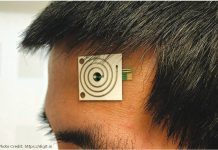 It comes the time when the energy needs for the spaces missions is not covered only by solar power and fuel cells.
It comes the time when the energy needs for the spaces missions is not covered only by solar power and fuel cells.
Solar energy has its limitations. Solar cells supply electricity only in near Earth orbits and for satellite-borne equipment. The nuclear power applications are far different from the terrestrial nuclear power stations and offers unique capabilities that could support manned outposts on other planets like Mars or moons.
James E. Werner, the project leader at the U.S. Department of Energy (DOE) said that the “people would never recognize the fission power system as a nuclear power reactor.” He also added that “the reactor itself may be about 1 ½ feet wide by 2 ½ feet high, about the size of a carry-on suitcase. There are no cooling towers. A fission power system is a compact, reliable, safe system that may be critical to the establishment of outposts or habitats on other planets. Fission power technology can be applied on Earth’s Moon, on Mars, or wherever NASA sees the need for continuous power.”
According to Werner “the biggest difference between solar and nuclear reactors is that nuclear reactors can produce power in any environment.” He explained that “fission power technology doesn’t rely on sunlight, making it able to produce large, steady amounts of power at night or in harsh environments like those found on the Moon or Mars. A fission power system on the Moon could generate 40 kilowatts or more of electric power, approximately the same amount of energy needed to power eight houses on Earth.”
It is obvious that a fission nuclear power system could operate in a variety of locations such as in craters, canyons or caves. Probably after last two important terrestrial nuclear accidents they want to move the danger far from us, out of space. The explanations aren’t necessary and the excuse is well motivated.
After the 242nd National Meeting & Exposition of the American Chemical Society inDenverwe found that a team is scheduled to build a technology demonstration unit in 2012. This is a cooperative project between the NASA and the DOE. Werner leads the DOE’s Idaho National Laboratory involvement in this effort, which includes participation in the reactor design and modeling teams, fuel development and fabrication and development of a small electrical pump for the liquid metal cooled system.



